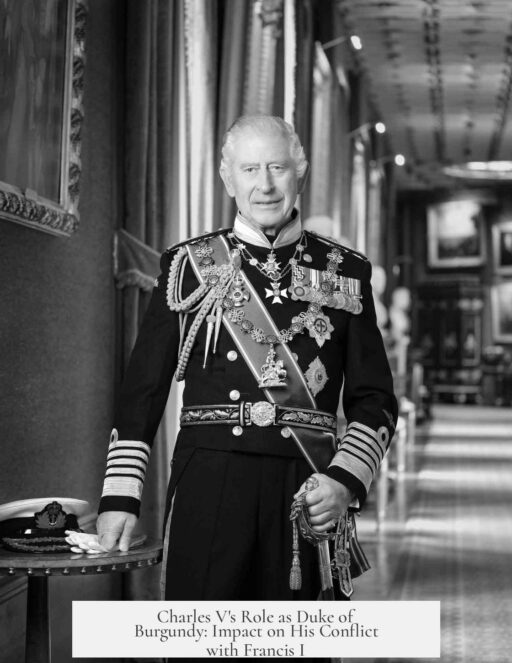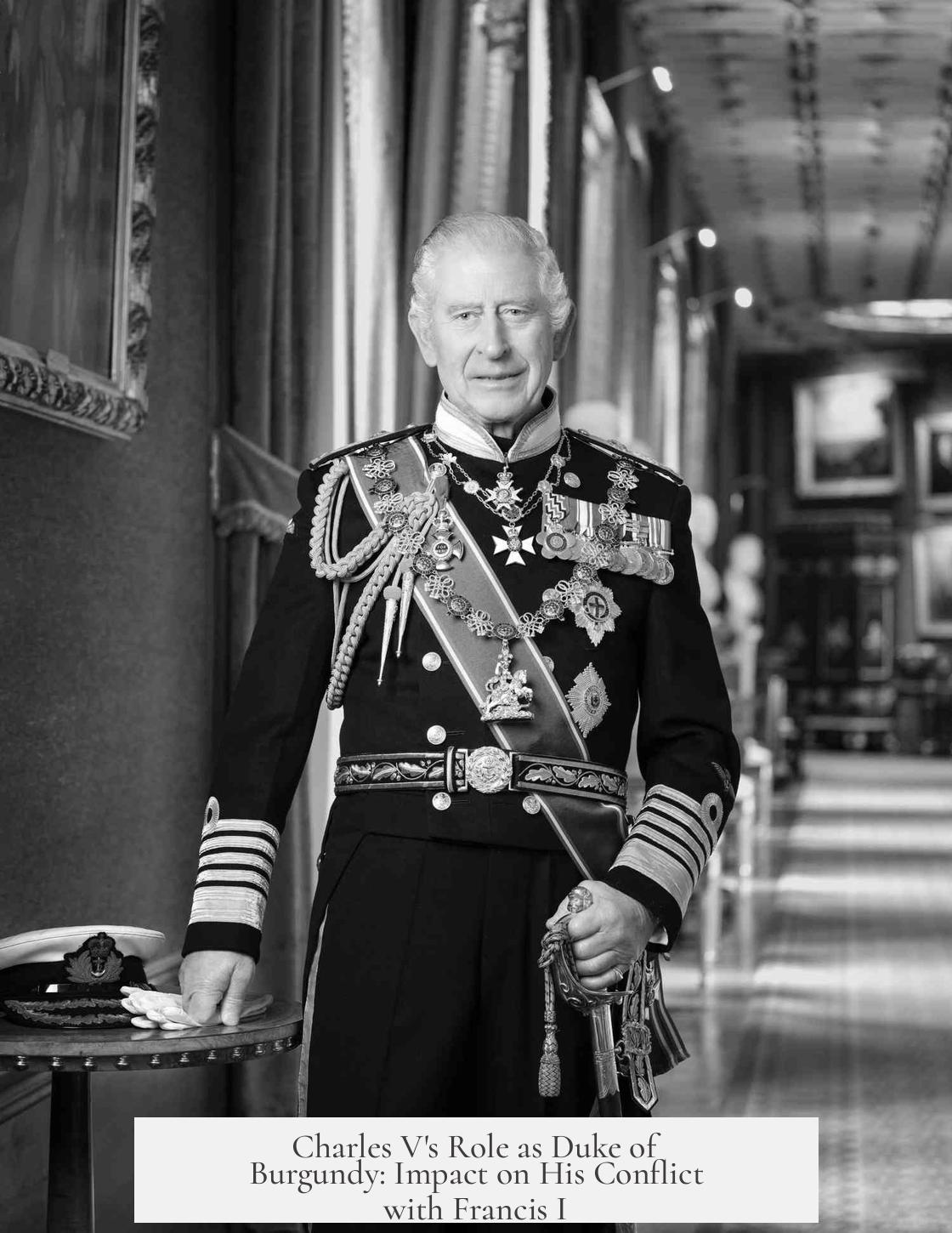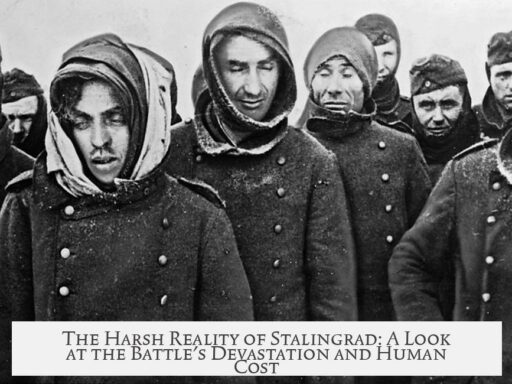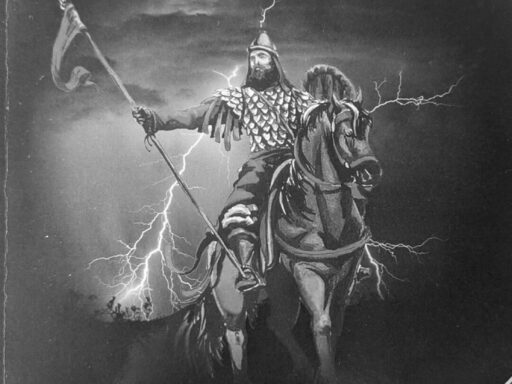Charles V’s role as Duke of Burgundy significantly influenced his relationship with Francis I of France by intensifying territorial rivalry and dynastic competition. This dual status gave Charles control over the rich Burgundian lands, including the strategic Low Countries and border regions adjacent to France, heightening tensions with Francis I.
The Burgundian inheritance included former territories with strong historic French connections. These lands became a power base for Charles V, which Francis I viewed as a direct threat to French interests. The control over these regions enabled Charles to challenge French influence and project military and political power in areas long contested by both monarchs.
The overlapping claims and ambitions over these territories worsened diplomatic relations. Charles’s Burgundian holdings provided substantial resources that strengthened his position during conflicts such as the Italian Wars. Both rulers frequently clashed over control of border areas and influence in Italy, with Burgundy as a critical junction for these struggles.
Moreover, the dynastic rivalry was personal as much as political. Charles and Francis descended from interrelated royal lineages but maintained hostile relations. Charles’s Burgundian title symbolized both a territorial and dynastic challenge, complicating any prospects for peaceful coexistence.
This combination of a powerful territorial domain and a dynastic claim increased political friction. Francis I had to contend with a rival who could mobilize extensive wealth and military assets from Burgundy. The region’s strategic importance allowed Charles V to maintain a persistent and influential presence in Western-European affairs.
- Charles V’s Burgundian inheritance created a robust territorial base that rivalled French lands.
- It intensified geopolitical rivalry due to overlapping claims on key border and Low Country regions.
- The territorial power fueled military conflicts such as the Italian Wars between the two monarchs.
- The dynastic competition was deepened by familial ties mixed with antagonism.
- Control of Burgundy augmented Charles’s influence, limiting French dominance in Western Europe.
Overall, Charles V’s position as Duke of Burgundy was central to the adversarial dynamic with Francis I. It shaped the political landscape of 16th-century Europe by sustaining a rivalry marked by territorial disputes and dynastic competition.
What Implications Did Charles V Being Duke of Burgundy Have on His Relationship with the French King Francis I?

The fact that Charles V, Holy Roman Emperor, also held the title of Duke of Burgundy had profound implications for his relationship with Francis I of France. This dual title made Charles a formidable rival in European politics and directly challenged Francis’s ambitions. But why exactly did being Duke of Burgundy matter so much? Let’s dive into the tangled political and territorial web that shaped their rivalry.
At first glance, it might seem like just a fancy additional title. Yet, Burgundy was no ordinary duchy—it was a powerhouse of wealth, strategic lands, and dynastic pride. Charles’s inheritance of the Burgundian domains gave him control over some of the richest parts of Europe, including the prosperous Low Countries and key border territories adjacent to France itself. For Francis I, this was like having a rival king sitting right on his doorstep, holding lands that France historically coveted or claimed.
A Hotbed of Contested Territory
Picture this: Burgundy wasn’t just a title but a sprawling patchwork kingdom with economic power and strategic importance. The Burgundian lands included bustling trade centers in Flanders and Brabant (today’s Belgium and Netherlands), vital gateways for commerce and military movements. These were regions where France had historical ties but lacked full control.
So, when Charles V became Duke of Burgundy, he didn’t just gain a chunk of land; he gained a political and military springboard that threatened French influence. Francis I had to reckon with the fact that Charles controlled territories that could be used for staging armies, conducting diplomacy, or asserting dominance in Western Europe. This made Charles a constant thorn in Francis’s side.
Battle of Ambitions: Personal and Political Feud
Charles and Francis weren’t just political competitors—they were dynastic rivals with tangled family roots but opposing aims. Their feud was less about personal dislike and more about who would dominate Europe, especially in regions where their influence overlapped.
For example, both vied for control over the Italian Peninsula during the Italian Wars, a series of brutal and complex conflicts. Burgundy’s assets played a crucial role here. Parts of eastern France bordered Burgundian lands, and Charles’s control allowed him to project power into Italy and beyond, directly clashing with Francis’s designs.
One can almost hear the royal chess match: every move Charles made from his Burgundian power base was met with a countermove by Francis, fueled by fear of losing ground and prestige.
Why Burgundian Wealth and Resources Mattered
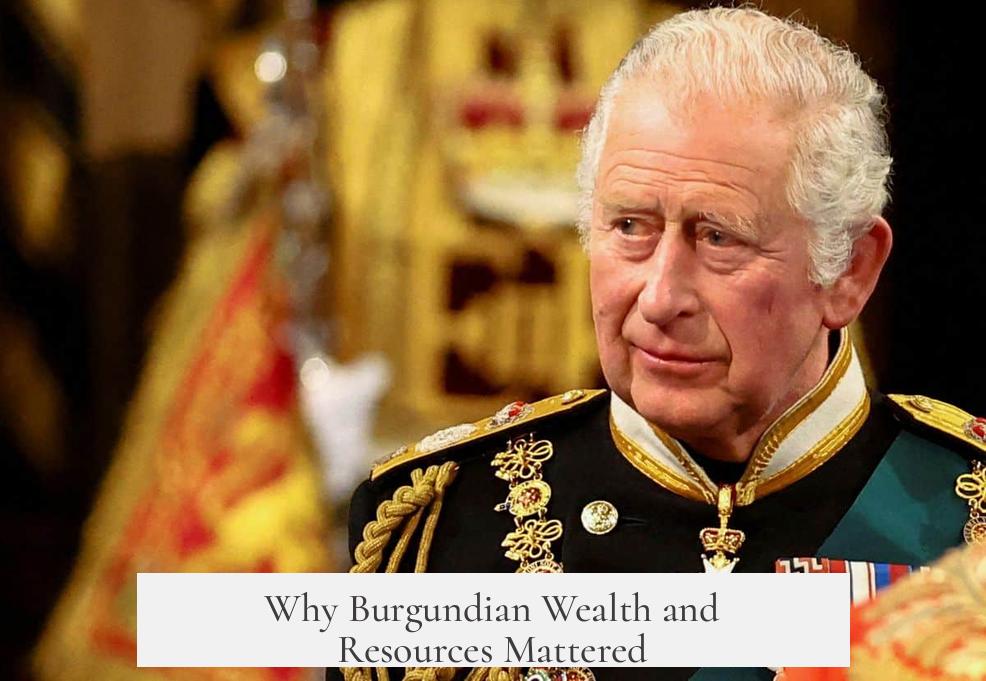
The Burgundian inheritance provided Charles with more than land—it handed him substantial resources. The Low Countries alone were economically vibrant, rich in textiles, trade, and wealth. This economic muscle made Charles a self-sufficient ruler able to fund armies, bribe allies, and maintain a vast ruling network.
This contrasted sharply with Francis, whose French kingdom, while powerful, faced pressures from within and without. The resources Charles amassed through Burgundy bolstered his position against France and enabled prolonged conflicts that drained French coffers and tested its resolve.
Diplomatic Games: A Rocky Relationship Hardened by Burgundy
Could Charles and Francis have played nice? Theoretically, yes. But the Burgundian title made peaceful coexistence difficult. It wasn’t merely land; it represented centuries of contention. Each monarch saw the other’s claims and titles as threats rather than opportunities for alliance.
The result was a series of political deaths, alliances, and betrayals, often centered around Burgundy’s territories. These tensions added fuel to conflicts such as the Italian Wars, making diplomacy a tough game with high stakes and few winners.
Summary Table: Burgundian Impact on Charles V and Francis I’s Relationship
| Aspect | Implication | Effect on Relationship |
|---|---|---|
| Territorial Control | Gain of wealthy, strategic lands adjacent to France | Increased rivalry; threat to French dominance |
| Economic Resources | Access to prosperous Low Countries and trade hubs | Enhanced military funding; prolonged conflicts |
| Dynastic Claims | Intertwined family trees with opposing ambitions | Heightened personal rivalry; influence over European politics |
| Strategic Position | Ability to project power into Italy and French borders | Direct competition in Italian Wars and border control |
| Diplomatic Challenges | Entitlement to contested territories complicated peace | Frequent conflict; strained diplomacy |
Practical Takeaway: Why Does This Matter Today?

Understanding this rivalry helps us see how geography, dynastic inheritance, and economics shape international relations—even in modern times. The tug-of-war between Charles V and Francis I over Burgundy reminds us how a single title or landholding can trigger decades of conflict or cooperation.
Imagine if those lands had been a shared influence instead of a source of rivalry. Could Europe’s political map have evolved differently? It’s an intriguing what-if question, but history took a different route.
If you’re inspired by these royal power struggles, think about how current leaders manage their own “Burgundies”—the resources, borders, and legacy claims that influence today’s diplomacy and conflicts.
Wrapping It Up
Charles V’s status as Duke of Burgundy was a game-changer in his relationship with Francis I. It wasn’t just a title; it was a strategic advantage, an economic boon, and a dynastic challenge all rolled into one. It made Charles’s rivalry with Francis deeply personal and politically fierce. Their battles over territory, influence, and legacy shaped 16th-century Europe—and left a mark on history that’s still worth examining.
So next time you hear about Burgundy in history lessons, remember: it was at the heart of an epic duel between emperors and kings, a duel that shows how a patch of land can weigh heavily on the balance of power.
